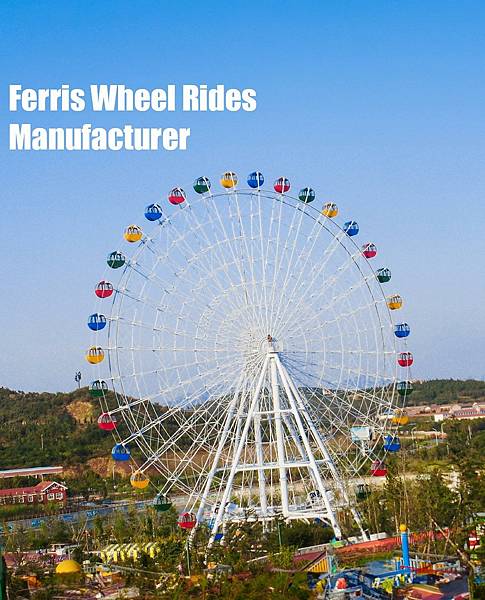Ferris wheels are iconic amusement park rides that provide riders with a leisurely and panoramic view from elevated heights. The operation of a Ferris wheel involves several key components and principles of physics:

Support Structure: At the heart of a Ferris wheel carnival ride manufacturers is its support structure, typically made of steel or other sturdy materials. This structure consists of a central axle or hub and a series of radial spokes extending outward, forming the framework for the wheel.
Gondolas or Passenger Pods: Attached to the outer rim of the ferris wheel for sale structure are gondolas or passenger pods. These are enclosed cabins or open-air seats where riders sit or stand during the ride. The number and design of gondolas can vary depending on the size and style of the Ferris wheel.
Counterweight System: Ferris wheels use a counterweight system to balance the load of the gondolas and ensure smooth operation. This system typically involves large counterweights located on the opposite side of the wheel from the gondolas. As the wheel rotates, the counterweights move in the opposite direction, helping to offset the weight of the passengers.
Drive Mechanism: Ferris wheels are powered by a drive mechanism located at the center of the wheel's axle. This mechanism may consist of an electric motor, hydraulic system, or other power source that drives the rotation of the wheel. The speed and direction of rotation can be controlled by the operator or automated system.
Rotation and Momentum: When the drive mechanism is activated, the Ferris wheel begins to rotate slowly. As the wheel gains momentum, the gondolas attached to the outer rim are carried along in a circular motion. The rotation of the wheel provides riders with a smooth and continuous journey, offering panoramic views of the surrounding area.
Safety Features: Ferris wheels are equipped with various safety features to protect riders during the ride. These may include secure restraints or safety bars in the gondolas, emergency stop mechanisms, and regular inspections to ensure structural integrity and mechanical reliability.
Loading and Unloading Platforms: To facilitate the boarding and disembarking of riders, Ferris wheels are typically equipped with loading and unloading platforms. These platforms are located at ground level or at a convenient height for easy access. Riders enter and exit the gondolas while the wheel is stationary, ensuring a safe and efficient boarding process.
Overall, Ferris wheels operate by harnessing rotational motion, counterbalancing forces, and careful engineering to provide riders with a relaxing and enjoyable experience while ensuring their safety throughout the ride. Click here to buy amusement park rides.






 留言列表
留言列表 amusementrides.id
amusementrides.id 


